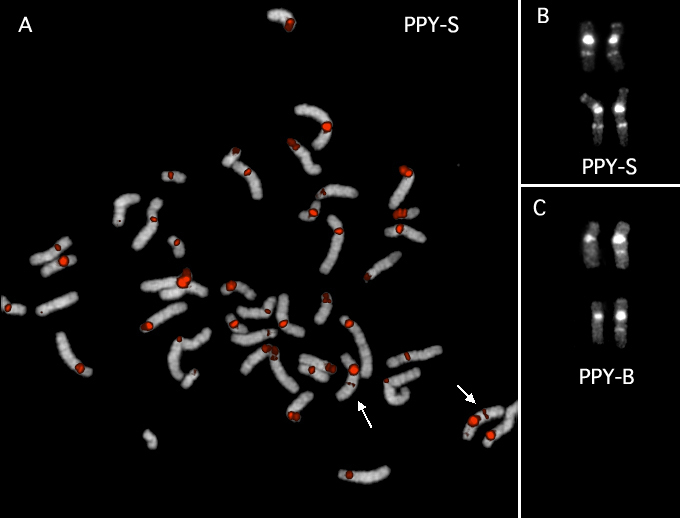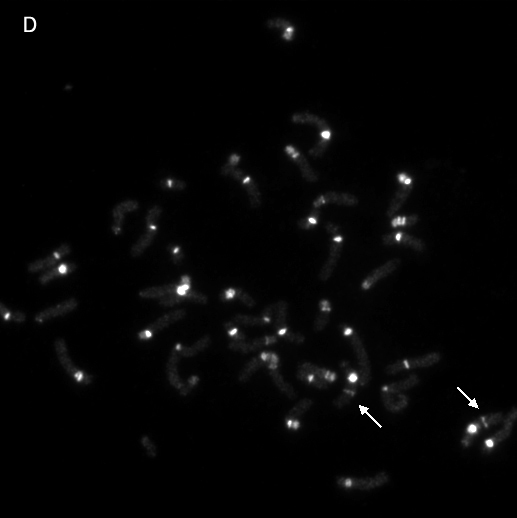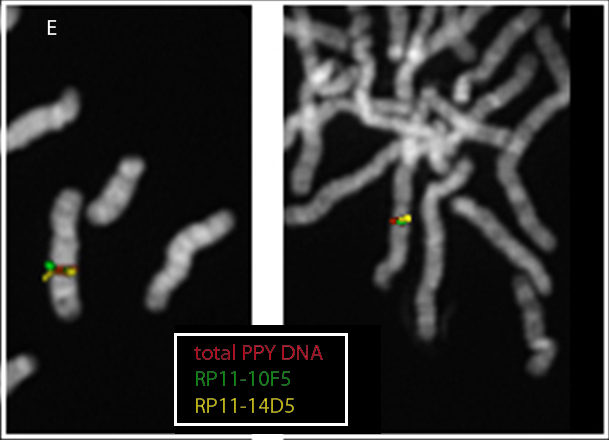


Orangutan metaphases were hybridized with total orang DNA, using human COT1 DNA to depress signals due to interspersed elements (SINE, LINE...). The only clear interstitial heterochromatin is on chromosome 6 (PPY6; human 8). Interestingly, this block is homozygous in PPY-S (Sumatra), while it is in heterozygous state in Borneo orangutan (PPY-B) (at least in this sample).
Note that PPY-S derives from the PPY-B. They differ for a pericentric inversion of chromosome PPY2 (human 3) (see Ventura et al: Genome Res 14:1696-1703, 2004).
A: merged metaphase (PPY-S);
B: partial metaphases showing chromosome 6 of Sumatra orangutan (PPY-S);
C: partial metaphases showing chromosome 6 of Borneo orangutan (PPY-B);
D: same metaphase as in A, showing how the not-merged signals appear on the microscope.
E: Two examples of cohybidization experiments using human BACs RP11-14D5 (yellow)(chr8:86,064,185-86,255,578), RP11-10F5 (green signal)(chr8:87,444,626-87,618,927), and total PPY DNA (red). The BACs appear very close to the heterochromatic block.


